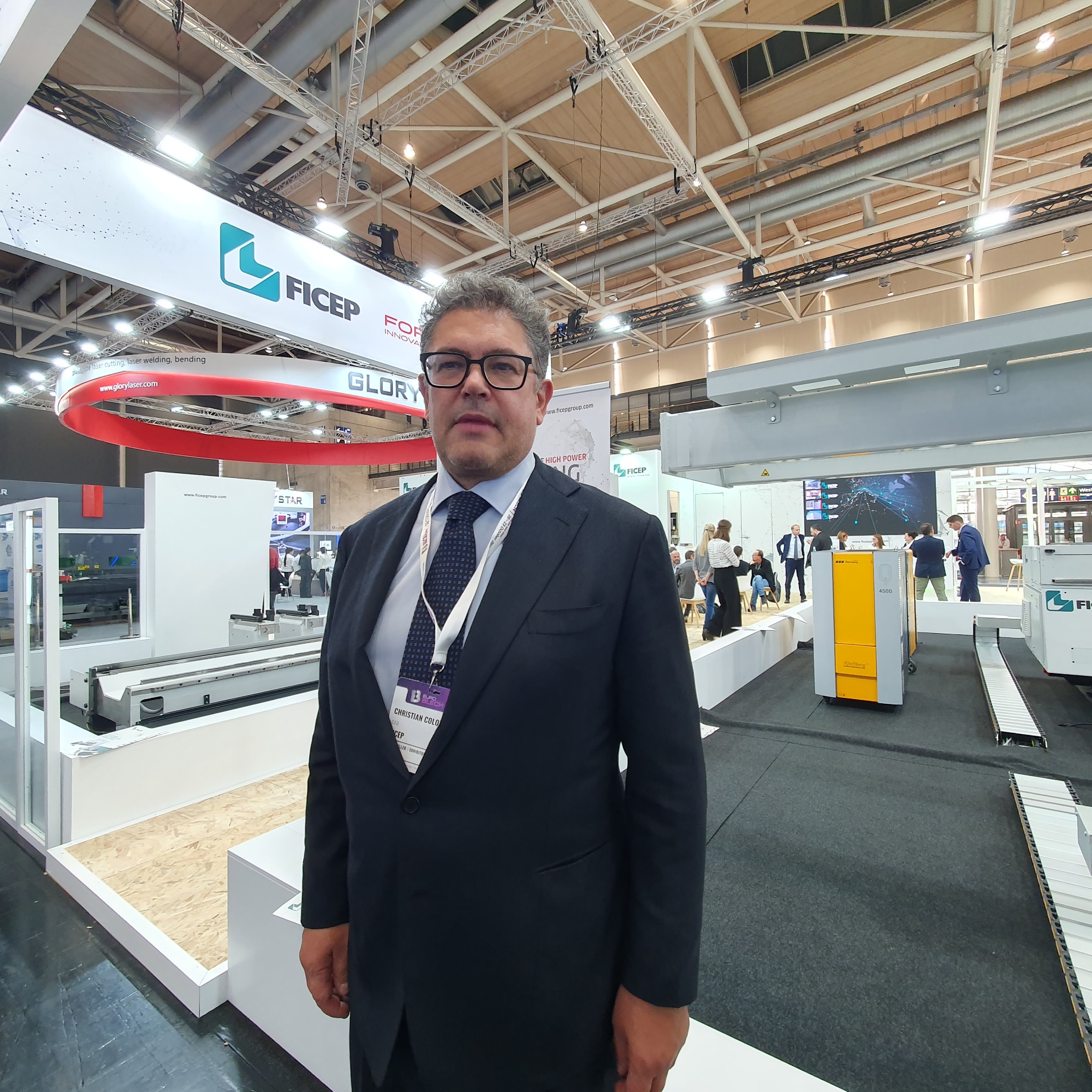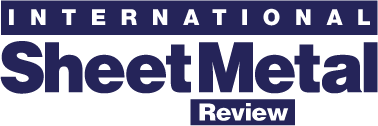
Fabrication in focus
Submitted by:
Sara Waddington
ISMR sat down with Ficep Group CEO, Ing. Christian Colombo, at EuroBLECH 2024 in Hanover to discover his views on market and industry sector growth as well as the company’s latest new innovations, software and digital transformation developments.
Ficep S.p.A. has become a leading supplier of automatic steel processing equipment (structural steel and plate fabrication) and a supplier of dedicated software for production management. Established in 1930 by the Colombo and Giuliani families and based in northern Italy (16km from the border with Switzerland), it focuses on the engineering and manufacturing of machine tools and software for the metalworking industry.
Its portfolio of machinery includes steel section and plate fabrication equipment as well as automated handling and forging systems. It manufactures a wide range of fabrication machines with options to punch, mark, drill, scribe, machine and shear or thermal cut. Ficep’s system simulation software allows it to evaluate potential layouts based on work force requirements, capabilities, throughput and production bottlenecks. With 17 direct subsidiaries throughout the world, it also runs a manufacturing plant in Bordeaux, France, for stand-alone products destined for the French/North-African region.
FICEP was at the EuroBLECH sheet metal exhibition in Hanover, Germany (22-25 October 2024), with two machines from its steel construction range. The XBLADE is its new automatic CNC single-spindle drilling, milling and cutting line for sections. The KRONOS is an automatic gantry-style CNC high-definition plasma and oxy-fuel cutting system, with robotic unloading, for plates.
ISMR sat down with Ficep Group CEO, Ing. Christian Colombo, during the exhibition, to discover his views on market and industry sector growth as well as the company’s latest new innovations, software and digital transformation developments.
====
ISMR: Please take us through the new technologies that you are showcasing here at EuroBLECH?
CC: We are presenting two new solutions here at EuroBLECH in Hanover. One is our XBLADE gantry-type machine for milling long profiles (typically structural steel profiles but also profiles for window frames, railways or square tubes/hexagonal shapes). XBLADE is a multi-purpose machining centre with a five-axis universal head. The beauty here is that we don’t have to handle the parts; it is the machine that moves on top of the parts for increased accuracy and positioning.
The novelty that we are presenting at EuroBLECH is the cutting head that also features a circular saw, so compact cuts and multi-mitre cuts in any direction are possible. This is pretty revolutionary; no other solution exists like this for structural steel today. We have received a lot of enquiries for it already.
The second new machine here is our KRONOS. This plasma-cutting machine can cut grating (typically, not a full plate surface to be cut but gaps between grates/slats) so this is a special solution that uses a welding wire to seal the gaps while it is plasma cutting. This means that a user can cut any shapes they wish on a grate without having to stop the plasma cutting process.
On our stand, the KRONOS has been coupled with a new Cartesian unloading device (a gripper with magnets) that can unload components that have been cut. We have integrated a new feature, a deburring tool. So, while we are doing the unloading, we are deburring the underside of the part and then sorting the pallets automatically. Basically, we are trying to cut out secondary operations, while we are moving the material.
KRONOS HP, SP & PC models are heavy-duty gantry style thermal cutting systems engineered for steel fabricators who need to generate diverse plate parts from stock plates. The Ficep KRONOS integrates all the cutting, marking and drilling processes into one single operation to reduce material handling costs.
ISMR: How did you handle the R&D process for these new technologies?
CC: Our R&D process takes around a year but, in fact, we purchased new software tools that allow us to better integrate the different resources around a project. This enables us to co-design and collaborate in a more efficient way, cutting development time now down to six months.
All our machines are designed in a modular way so, for example, the same functionality heads, working units, frames etc. can be used across all our machine platforms. Modules have multi-platform interfaces so that we can create a higher volume for better industrialisation of products.
The heart and soul of our innovative capability is our R&D department, where solutions for the future are designed and tested. Our research activity involves a dedicated staff of 50 people (including engineers, technicians and CAD/CAM operators) who can count on the direct support of the production department for developing prototypes.
ISMR: Please outline any recent successes or achievements for Ficep Group?
CC: We have registered record sales now for the third year in a row. Last year, we made 20% more sales than the year before. This year, it will also be a record year (15% more sales than last year).
We are competing in a more aggressive market, which offers lots of solutions, but our strategy has always been to provide a process for our customers. Our customers typically are steel construction builders (transmission towers, buildings, bridges etc.). We try to supply them with every working unit to enable them to make their products. This includes shot blasting (cleaning materials); drilling, sawing and milling beams and secondary components (like gratings and gusset plates). We then allow them to coordinate the assembly of these components, providing elements such as shot blasting and painting so that products can go straight onto the truck.
Our great success is that we can now fulfil all the processes needed (including painting, robotic welding etc.). Customers don’t just want cutting operations; other machining operations (such as drilling, marking, milling etc.) are needed, so all our machines offer extra functionality. That can mean cutting with laser, plasma or oxyfuel with drilling and milling on top, to offer flexible operations.
At the same time, I am proud to confirm that we are continuing to develop our product lifecycle management software. We are now integrating capabilities with process simulation so that customers know how much time it will take to finish a job. We are integrating more and more assets in the workshop, even manual operations, to enable traceability and match it to the scheduling. We can also integrate our machines with IoT devices to collect data on energy and gas consumption, as well as operating costs in general.
We wish to fulfil all the value streams of our customers to make them as efficient, while we develop our own value streams. This applies to all operations, not just to machine delivery, but to pre-sales activities, feasibility and simulation studies, project management and follow-up after delivery with consultancy on lean management etc. to customers. It is a continuous process.
This involves a lot of investment on our side: increasing capacity and investing in new machinery and systems. We installed a large Mazak FMS (possibly the biggest in Europe) on our production line that works automatically 24 hours per day, seven days per week. We are very vertically integrated and tend to design and manufacture our own components. We buy in some hydraulic, electrical and pneumatic components but, in general, our own technical and service engineers can work in the same manner on every asset with no need to specialise on particular technologies.
ISMR: Where do you see areas of growth and opportunity for manufacturers?
CC: We are living in difficult times with two wars in Ukraine and Gaza that will not finish quickly. It is difficult to predict the oil price but my feeling is that areas of continuing development will be in Europe. Europe has a very ambitious plan, the Green Deal, that dictates how a machine/product is designed from an energy-monitoring and sustainability standpoint. At this point, risks from conflict and possible oil price rises make it difficult to see whether some of these ambitious sustainability targets can be reached.
Having said that, I think that Europe should find a way to stimulate and incentivise manufacturers to tread this path. It should not just be because “we need to be greener.” For example, Europeans have a lot of installed machines that are old. Perhaps the European Community could consider, in view of continuing competition from the Far East, offering European manufacturers the option to buy back older machines instead of giving out a grant, or even contribute to the trade-in purchase or incentivise companies to retrofit older machines so that they can be re-sold into the market. This sustainable business model could give machinery builders in Europe an incentive to be different from everyone else and compete on new terms with far Eastern manufacturers.
North America is an important part of our business, representing 30 per cent of where we sell. Europe is still 40% of our market and the rest is outside Europe. The Italian market is growing strongly but I see the greatest growth to come in the Middle East (from structural steel markets etc.).
ISMR: Please explain your strategic and technical focus/vision over the next few years?
To read the rest of this interview in the December 2024/January 2025 issue of ISMR, please see https://joom.ag/Vg7d/p20
